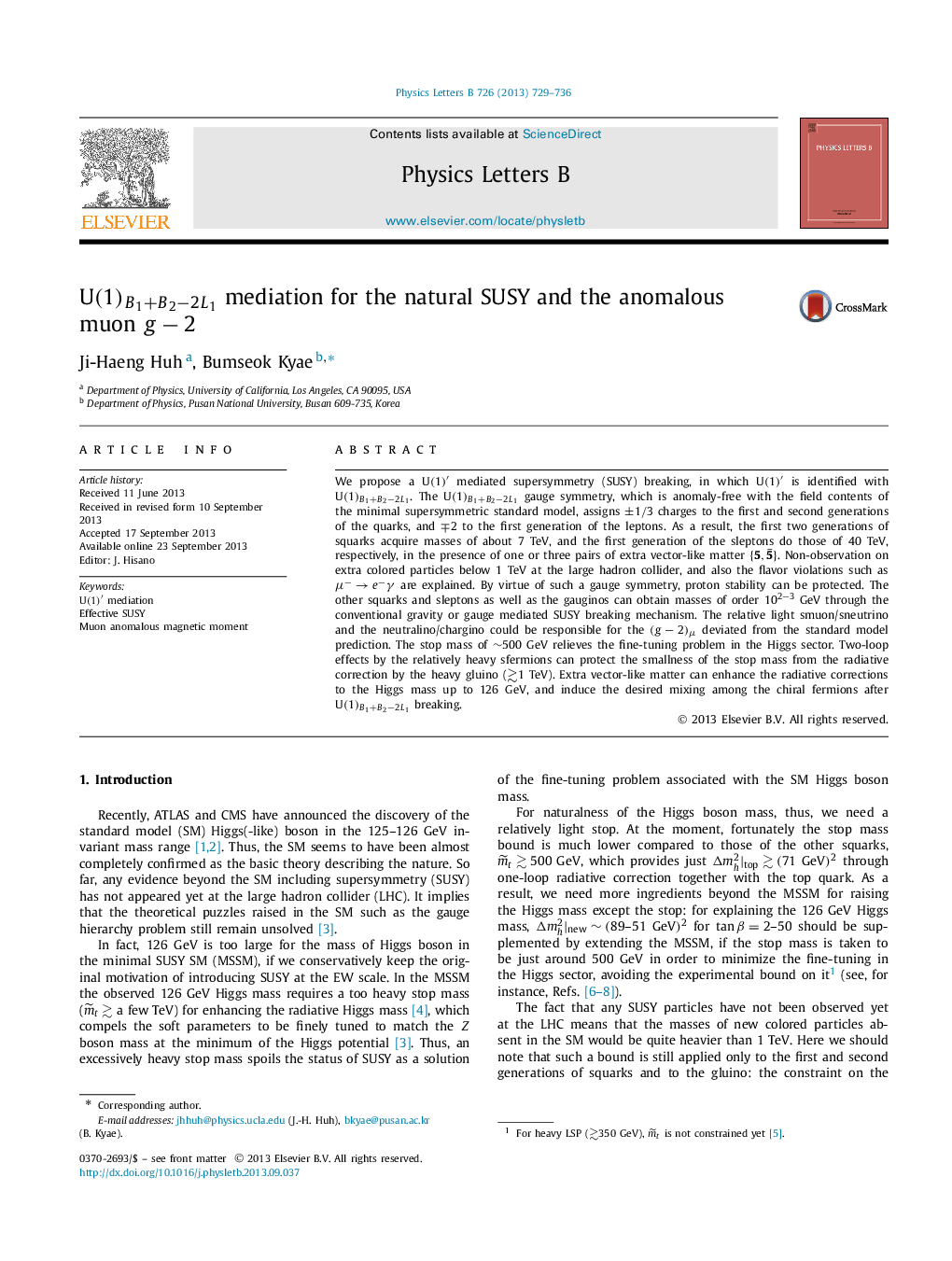| Article ID | Journal | Published Year | Pages | File Type |
|---|---|---|---|---|
| 8187656 | Physics Letters B | 2013 | 8 Pages |
Abstract
We propose a U(1)â² mediated supersymmetry (SUSY) breaking, in which U(1)â² is identified with U(1)B1+B2â2L1. The U(1)B1+B2â2L1 gauge symmetry, which is anomaly-free with the field contents of the minimal supersymmetric standard model, assigns ±1/3 charges to the first and second generations of the quarks, and â2 to the first generation of the leptons. As a result, the first two generations of squarks acquire masses of about 7 TeV, and the first generation of the sleptons do those of 40 TeV, respectively, in the presence of one or three pairs of extra vector-like matter {5,5¯}. Non-observation on extra colored particles below 1 TeV at the large hadron collider, and also the flavor violations such as μââeâγ are explained. By virtue of such a gauge symmetry, proton stability can be protected. The other squarks and sleptons as well as the gauginos can obtain masses of order 102â3 GeV through the conventional gravity or gauge mediated SUSY breaking mechanism. The relative light smuon/sneutrino and the neutralino/chargino could be responsible for the (gâ2)μ deviated from the standard model prediction. The stop mass of â¼500GeV relieves the fine-tuning problem in the Higgs sector. Two-loop effects by the relatively heavy sfermions can protect the smallness of the stop mass from the radiative correction by the heavy gluino (â³1TeV). Extra vector-like matter can enhance the radiative corrections to the Higgs mass up to 126 GeV, and induce the desired mixing among the chiral fermions after U(1)B1+B2â2L1 breaking.
Keywords
Related Topics
Physical Sciences and Engineering
Physics and Astronomy
Nuclear and High Energy Physics
Authors
Ji-Haeng Huh, Bumseok Kyae,
